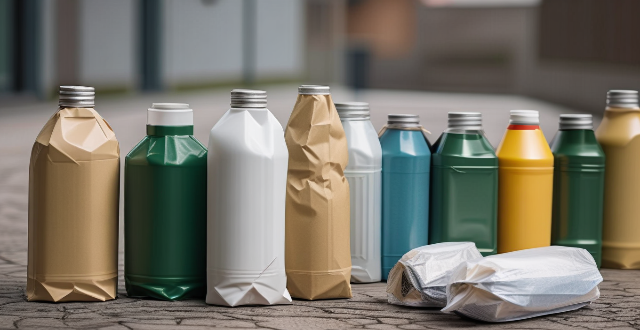Food packaging can be recycled, but it depends on the type of material used. Plastic, paper, metal, and glass are all commonly used for food packaging, and each has its own recyclability challenges. To recycle these materials effectively, they must be sorted by type and cleaned thoroughly to remove any contaminants. Many communities have curbside recycling programs that accept these materials, but it is essential to check with your local recycling center to determine which types they accept. By recycling food packaging, we can reduce waste and conserve resources while also reducing our impact on the environment.

Can Food Packaging be Recycled?
Food packaging is an essential part of our daily lives, but it also contributes significantly to environmental pollution. The question arises: can food packaging be recycled? The answer is not straightforward, as it depends on various factors. In this article, we will explore the different types of food packaging and their recyclability.
Types of Food Packaging
Plastic Packaging
Plastic is one of the most common materials used for food packaging. It is lightweight, durable, and inexpensive. However, plastic is not easily biodegradable and can take hundreds of years to decompose in a landfill. Therefore, it is crucial to recycle plastic packaging to reduce its impact on the environment.
Paper Packaging
Paper packaging is another popular option for food products. It is biodegradable and renewable, making it an eco-friendly choice. However, paper packaging often has additional coatings or treatments that make it difficult to recycle. For example, wax-coated paper cannot be recycled because the wax interferes with the recycling process.
Metal Packaging
Metal packaging, such as tin cans and aluminum foil, is also widely used for food products. Metal is highly recyclable and can be infinitely recycled without losing its quality. Therefore, metal packaging is an excellent choice for reducing waste and conserving resources.
Glass Packaging
Glass packaging is commonly used for liquid foods like juices and sauces. Glass is also highly recyclable and can be melted down and reformed into new glass products. However, glass recycling requires more energy than other materials, so it may not be the most efficient option in terms of resource conservation.
Recycling Food Packaging
Now that we have discussed the different types of food packaging let's explore how they can be recycled.
Plastic Recycling
To recycle plastic packaging, it must first be sorted by type (e.g., PET, HDPE) and then cleaned thoroughly to remove any contaminants. Once sorted and cleaned, the plastic can be shredded into small pieces and melted down to create new plastic products. Many communities have curbside recycling programs that accept plastic containers, but some types of plastic are more challenging to recycle than others. It is essential to check with your local recycling center to determine which types of plastic they accept.
Paper Recycling
Recycling paper packaging involves separating it from other materials and removing any non-paper components like staples or glue. Once separated and cleaned, the paper can be pulped and turned into new paper products. Many communities have curbside recycling programs that accept paper packaging, but some types of paper may require special handling or disposal methods. It is crucial to check with your local recycling center to determine which types of paper they accept.
Metal Recycling
Recycling metal packaging involves separating it from other materials and removing any non-metal components like labels or glue. Once separated and cleaned, the metal can be melted down and reformed into new metal products. Many communities have curbside recycling programs that accept metal containers, but some types of metal may require special handling or disposal methods. It is essential to check with your local recycling center to determine which types of metal they accept.
Glass Recycling
Recycling glass packaging involves separating it from other materials and removing any non-glass components like labels or glue. Once separated and cleaned, the glass can be melted down and reformed into new glass products. Many communities have curbside recycling programs that accept glass containers, but some types of glass may require special handling or disposal methods. It is crucial to check with your local recycling center to determine which types of glass they accept.